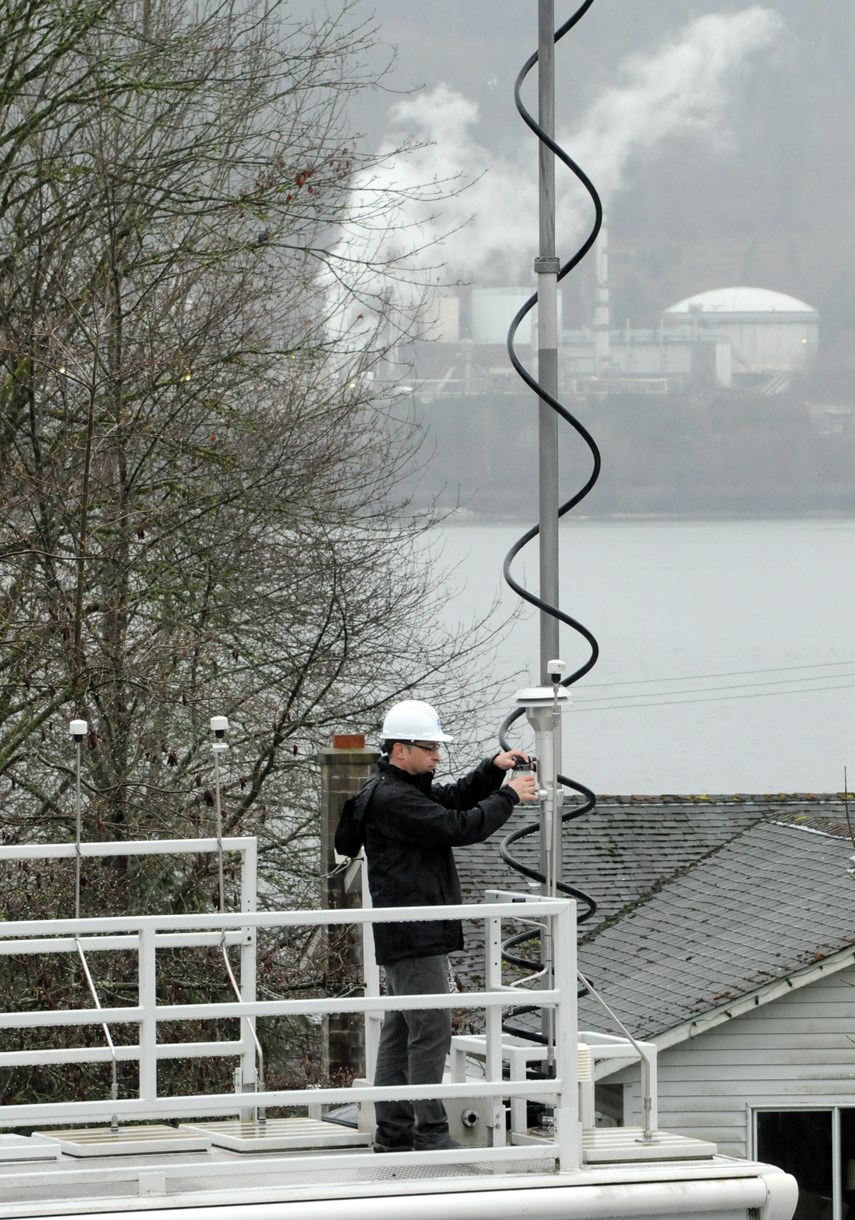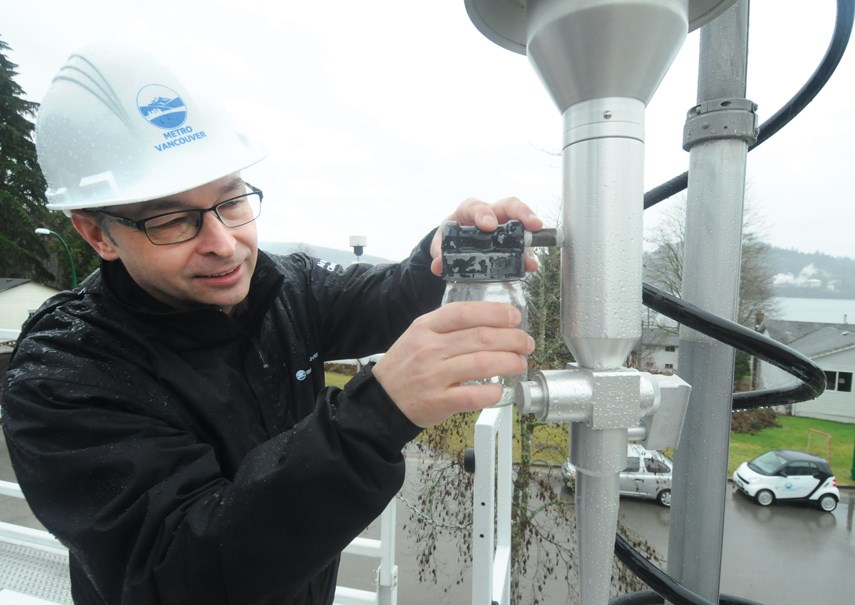On a cool and particularly damp March morning, steam can be seen rising from the stacks of the Parkland oil refinery in Burnaby. Across Burrard Inlet on Tsleil-Waututh Nation lands is some sophisticated machinery designed to detect everything that may be lingering in the air.
Metro Vancouver has parked its Mobile Air Quality Monitoring Unit (or MAMU) near the Tsleil-Waututh Cultural and Recreation Centre as part of a study into air pollutants that could pose a threat to human health.
“This is an area that has a lot of … industrial emissions, a lot of traffic, a lot of marine vessels, and all kinds of dockside equipment. We’ve always thought of it as an area that needed to be monitored a bit more intensely,” said Ken Reid, superintendent of environmental monitoring and sampling.
The MAMU provides real-time measuring of carbon monoxide, sulphur dioxide, nitrogen dioxide, ground-level ozone, fine particulate matter, inhalable particulate matter and black carbon but in this case, it’s the sulphur they’re most interested in. Particularly as that’s one of the outputs from the refining process at Parkland (formerly Chevron.)
“In terms of the industrial emissions, the refinery there is the largest in the region,” Reid said. “Most of the time the winds are not coming directly from the plant but the dispersion monitoring will link the emissions to the meteorology and show where the sulphur dioxide is likely to go.”

Metro Vancouver’s objective is to keep sulphur dioxide to less than 70 parts per billion, on average, over the course of one hour or five parts per billion on an annual average basis.
Exposure to sulphur dioxide can cause people with lung conditions such as asthma to experience breathing problems, and is linked with increases in hospital admissions. It can also react with other substances in the air to form fine particulate matter or acid rain.
The MAMU will be parked on the Tsleil-Waututh land anywhere from six months to a year, depending on what the results show. If the results show pollutants at a higher level than Metro’s objectives, they can work with the likely polluters to mitigate their emissions. Marine vessels are harder to regulate, Reid said, but emissions from ships have been dropping dramatically in recent years thanks to changing standards for marine fuels.
“Over the course of the last five to six years the sulphur content has reduced by about two orders of magnitude. It’s a really dramatic decrease in the sulphur content and we see that in the monitoring data as well,” he said.
The Tsleil-Waututh Nation is keenly interested in the results of the monitoring. Dale Komanchuk, director of public works for the Tsleil-Waututh, said the project is in keeping with the nation’s mandate to restore Burrard Inlet as closely as possible, back to its original state.
“There have been a lot of concerns here about air quality for a long time, in good part from the refinery across the way. There is a perception that cancer rates may be higher here and that roofing materials are breaking down sooner here,” he said. “We’ve just recently started to do a study on it from our health department… It would be nice to put the concerns to rest if it’s not a problem and it would be nice to know if it is a problem.”



